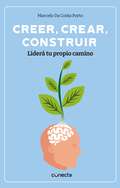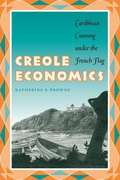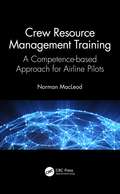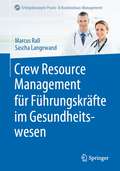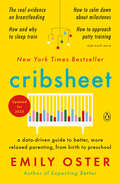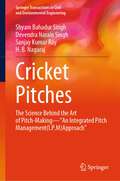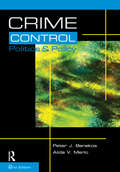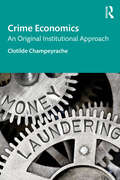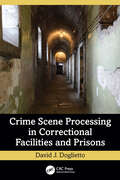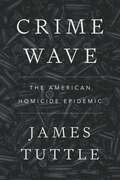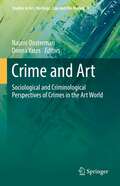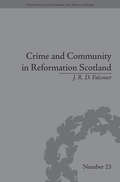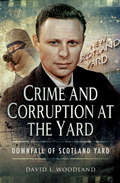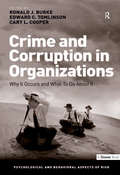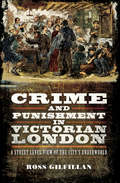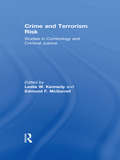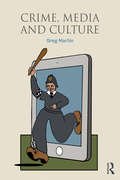- Table View
- List View
Cree, Inc.: Which Bright Future?
by Matthew Shaffer David J. Collis Mary FureyAfter its founding in the late 1980s, Cree Inc. quickly grew into a major player in the emerging LED market. By 2007, technological improvements in LEDs had made them suitable for TV, computer, and mobile "backlighting"; and concerns over global warning led to calls to shift to more energy-efficient sources of general lighting (which favored LEDs, as they were far more efficient than the traditionally-dominant incandescents). In this context, Cree faced a strategic conundrum: Should it focus on its historical expertise in manufacturing LED "chips" and components for use in other manufacturers' applications and screens, where LEDs now had established usage? Or should it instead attempt the risky venture of manufacturing its own LED light-bulbs for direct sale to consumers for general lighting? This case presents the history of Cree and information on the LED and general-lighting markets, as background for a debate on Cree's strategic choice.
Cree, Inc.: Which Bright Future?
by Matthew Shaffer David J. Collis Mary FureyAfter its founding in the late 1980s, Cree Inc. quickly grew into a major player in the emerging LED market. By 2007, technological improvements in LEDs had made them suitable for TV, computer, and mobile "backlighting"; and concerns over global warning led to calls to shift to more energy-efficient sources of general lighting (which favored LEDs, as they were far more efficient than the traditionally-dominant incandescents). In this context, Cree faced a strategic conundrum: Should it focus on its historical expertise in manufacturing LED "chips" and components for use in other manufacturers' applications and screens, where LEDs now had established usage? Or should it instead attempt the risky venture of manufacturing its own LED light-bulbs for direct sale to consumers for general lighting? This case presents the history of Cree and information on the LED and general-lighting markets, as background for a debate on Cree's strategic choice.
Creer, crear, construir: Liderá tu propio camino
by Marcelo Da Costa PortoMarcelo Da Costa Porto nos revela en este libro que emprender no es algo sencillo, pero que el secreto reside en nuestro poder de trabajo y en la pasión que le ponemos a nuestros objetivos. La actitud emprendedora se puede aplicar a todos los ámbitos, y este libro nos invita, de manera ágil y entretenida, a encontrarnos a nosotros mismos en ese camino. A lo largo de las páginas, el lector descubrirá capítulos sobre cómo emprender en familia, sobre las particularidades del mercado local, los desafíos que se presentan, y también sobre cómo lidiar con las nuevas tecnologías.
Creole Economics: Caribbean Cunning under the French Flag
by Katherine E. BrowneBrowne draws on a decade of ethnographic fieldwork and interview data from all socioeconomic sectors to question the common understanding of informal economies as culture-free, survival strategies of the poor. Anchoring her own insights to longer historical and literary views, the author shows how adaptations of cunning have been reinforced since the days of plantation slavery. These adaptations occur, not in spite of French economic and political control, but rather because of it. Powered by the "essential tensions" of maintaining French and Creole identities, the practice of creole economics provides both assertion of and refuge from the difficulties of being dark-skinned and French. This powerful ethnographic study shows how local economic meanings and plural identities help explain work off the books. Like creole language and music, creole economics expresses an irreducibly complex blend of historical, contemporary, and cultural influences.
Crescent Petroleum—Dana Gas: Negotiate, Mediate, Arbitrate
by Sophus A Reinert Kristin E. Fabbe Nathan CisnerosCrescent Petroleum—Dana Gas: Negotiate, Mediate, Arbitrate by Kristin Fabbe, Sophus Reinert and Nathan Cisneros
Crescent Petroleum—Dana Gas: Negotiate, Mediate, Arbitrate
by Sophus A Reinert Kristin E. Fabbe Nathan CisnerosProfessors Kristin Fabbe and Sophus Reinert and Research Associate Nathan Cisneros prepared this case. It was reviewed and approved before publication by a company designate. Funding for the development of this case was provided by Harvard Business School and not by the company. HBS cases are developed solely as the basis for class discussion. Cases are not intended to serve as endorsements, sources of primary data, or illustrations of effective or ineffective managemen
Crescent Pure
by John A. Quelch Alisa ZaloshExecutives from Portland Drake Beverages (PDB) are meeting to determine the appropriate product positioning and advertising campaign for the launch of Crescent Pure, a specialty organic beverage. They have 3 options for positioning: should Crescent Pure be positioned as an energy drink, a sports drink, or should it adopt broader positioning as an "organic health and wellness" beverage? Students studying this case explore customer segmentation, product differentiation analysis, and the evaluation of perceptual maps as a market research technique.
Cresud and Argentina
by David E. Bell Mary ShelmanArgentina-based Cresud managed 1 million hectares (2.5 million acres) of land in South America. For 20 years, the publicly traded company's strategy had been to acquire underutilized properties and turn them into productive farmland for cattle and crops. In 2014, Cresud's CEO wondered if the strategy was still correct in the face of falling commodity prices, more powerful input companies, and potentially positive changes in Argentina's political environment.
Crew Resource Management Training: A Competence-based Approach for Airline Pilots
by Norman MacLeodThe book provides a data-driven approach to real-world crew resource management (CRM) applicable to commercial pilot performance. It addresses the shift to a systems-based resilience thinking that aims to understand how worker performance provides a buffer against failure. This book will be the first to bring these ideas together. Taking a competence-based approach offers a more coherent, relevant approach to CRM. The book presents relevant, real-world examples of the concepts and outlines a change in thinking around pilot performance and data interpretation that is overdue. Airlines, pilots and aviation industry professionals will benefit from the insights into organisational design and alternative approaches to training. FEATURES Approaches CRM from a competence-based perspective Uses a systems model to bring coherence to CRM Includes a chapter on using blended learning and virtual reality to deliver CRM Features research on work/life balance, morale, pilot fatigue and link to error Operationalises ‘resilience engineering’ in a crew context
Crew Resource Management für Führungskräfte im Gesundheitswesen (Erfolgskonzepte Praxis- & Krankenhaus-Management)
by Marcus Rall Sascha LangewandTypische Besonderheiten in der Medizin: Hochrisikobereich, Schichtdienst, Teamwork interdisziplinär. Dies erfordert eine klare, eindeutige, schnelle Kommunikation, die auch in Notfallsituationen funktionieren muss. Anhand der 15 CRM Leitsätze werden Möglichkeiten aufgezeigt, die Personalführung zu verbessern. In Kombination der Anwendung dieser Leitsätze werden folgende Kompetenzen gestärkt: Analyse- und Diagnosekompetenz: CRM basiertes fundiertes Verständnis kommunikativer Dynamiken in Organisationen des GesundheitswesensStärkung der Selbst- und Fremdwahrnehmung in der FührungsrolleFührungskompetenz: Verständnis und Praxis von Leadership im Sinne nachhaltiger Führung, Delegieren im „double loop“ zur Vermeidung von MissverständnissenManagementkompetenzen: Veränderung von Führungsstrukturen und Kommunikationswegen im GesundheitswesenKonfliktkompetenzen: Konfliktanalyse, Konfliktbearbeitung und Konfliktlösung mittels einfacher Methodiken, z.B. „10 Sekunden für 10 Minuten“ Zu den zahlreichen Anwendungsbereichen zählen: Gestaltung von Führungsprozessen, Personal- und Teamentwicklung, Innovationsmanagement und Strategieplanung, Organisationsentwicklung, Changemanagement, Konfliktmanagement – also tägliche Führungsarbeit.
Cribsheet: A Data-Driven Guide to Better, More Relaxed Parenting, from Birth to Preschool (The ParentData Series #2)
by Emily OsterFrom the author of Expecting Better, The Family Firm, and The Unexpected an economist's guide to the early years of parenting.&“Both refreshing and useful. With so many parenting theories driving us all a bit batty, this is the type of book that we need to help calm things down.&” —LA Times&“The book is jampacked with information, but it&’s also a delightful read because Oster is such a good writer.&” —NPR With Expecting Better, award-winning economist Emily Oster spotted a need in the pregnancy market for advice that gave women the information they needed to make the best decision for their own pregnancies. By digging into the data, Oster found that much of the conventional pregnancy wisdom was wrong. In Cribsheet, she now tackles an even greater challenge: decision-making in the early years of parenting. As any new parent knows, there is an abundance of often-conflicting advice hurled at you from doctors, family, friends, and strangers on the internet. From the earliest days, parents get the message that they must make certain choices around feeding, sleep, and schedule or all will be lost. There's a rule—or three—for everything. But the benefits of these choices can be overstated, and the trade-offs can be profound. How do you make your own best decision? Armed with the data, Oster finds that the conventional wisdom doesn't always hold up. She debunks myths around breastfeeding (not a panacea), sleep training (not so bad!), potty training (wait until they're ready or possibly bribe with M&Ms), language acquisition (early talkers aren't necessarily geniuses), and many other topics. She also shows parents how to think through freighted questions like if and how to go back to work, how to think about toddler discipline, and how to have a relationship and parent at the same time. Economics is the science of decision-making, and Cribsheet is a thinking parent's guide to the chaos and frequent misinformation of the early years. Emily Oster is a trained expert—and mom of two—who can empower us to make better, less fraught decisions—and stay sane in the years before preschool.
Cricket Pitches: The Science Behind the Art of Pitch-Making—“An Integrated Pitch Management (I.P.M) Approach” (Springer Transactions in Civil and Environmental Engineering)
by Devendra Narain Singh Shyam Bahadur Singh Sanjay Kumar Ray H. B. NagarajThe book develops a practical understanding of the fundamental scientific principles and logic underlying the art of turf pitch preparation, measuring, analysing, and interpreting pitch surface behaviour. It’s an attempt to understand how the captains, players, coaches, curators, and groundsmen comprehend and analyse the cricket pitch behaviour (days before and during the matches) and whether the pitch behaviour can be standardised and quantified (through bench marking or forming a data-based management system (DBMS) of a pitch profile, pitch quality standards, a pitch behaviour analysis index (PBAI), or pitch behaviour forecasting (PBF) by examining or analysing its mineralogical, chemical, physical, or morphological compositions, weather variables, and different pitch preparation methods and techniques. Individual chapters in this book deal with clay mineralogy, the bench-marking of cricket pitch soils, pitch soil chemical properties, pitch soil water, pitch turf grass, pitch soil organic matter, integrated rolling management, soil structure, and compressibility. This is an effort to decipher the impact of each and every major and minor component of pitch soil, which controls the pitch behaviour either in large or small magnitudes but acts as a critical factor in defining and shaping the pitch behaviour as a whole. Several real-life examples, pitch interviews, scenarios, and case studies as felt and observed by the curator( first author) during the preparation of various international, national, and board matches or during the construction and renovation of new wickets have been included in each and every relevant chapter so as to analyse, interpret, comprehend, and justify the theoretical science with the existing practises involved in pitch construction, preparation, or judging the complex nature of pitch behaviour. Based on findings through the DBMS, PBAI, and PQS of cricket pitch profiles, various innovative and simple methods of analysing, comprehending, and forecasting pitch behaviour have been devised that will enable one to judge and comprehend the complex pitch behaviour in simple ways.
Crie sua Agência de Marketing Digital
by Robinson Hardin Gerson AguilarComo crio minha agência de marketing on-line? Por onde começo? Quanto dinheiro devo ter? É o que todo empreendedor desta era digital se pediu para formar uma agência de marketing. Com as tecnologias atuais e acesso à Internet, muitas portas se abrem para nós. Um mundo cheio de possibilidades. Este livro irá ajudá-lo a conhecer um pouco mais através destas 14 dicas precisas para realizar com sua Agência de Marketing Online. Cresça, cresça sua marca, relacione-se com seus clientes, estude sua concorrência, isso e muito mais para que você possa começar a iniciar seu negócio de Marketing Digital.
Crime Control, Politics and Policy
by Alida V. Merlo Peter J. BenekosThis book reviews concepts, information and points of view that help to explain the context and constraints of the criminal justice system. The chapters summarize developments in public policy and crime control, and interweave themes central to the discussion: the impact of ideology, the role of the media, and the politicization of crime and criminal justice.
Crime Economics: An Original Institutional Approach (Routledge Frontiers of Political Economy)
by Clotilde ChampeyrachePresenting an original institutional approach, this book makes the case for an empirically based crime economics that aims to guide the fight against crime within a logic of reasonable capitalism and the common good.Historically, it was not until a seminal article by Gary Becker that mainstream economists showed any interest in the criminal economy. The new field of crime economics was, in reality, little more than an extension of rational choice theory and cost-benefit analysis to a new subject. However, reducing crime to a single profit perspective has proven reductive: it ignores, for example, crime that affects public order (e.g., vandalism), and the individualistic approach does not seem to be very relevant when dealing with criminal organizations. Criminal phenomena therefore call for a renewal of the analysis. Inspired, in particular, by the work of Veblen and Commons, this book calls for a renewal of the analysis. It argues for an institutional focus on the integration of individuals into organizational and institutional contexts which provides a richer analysis of criminal choices and reintroduces collective and power-seeking motivations. The study of illegal markets uses an evolutionary approach to highlight their dynamic, cooperative, and interconnected dimensions. The question of criminal infiltration of the legal economy is assessed beyond the issue of money laundering to include territorial control strategies. Finally, a review of the liberal economic discourse and the values it embodies raises questions about the responsibility of the legal economy and its players in the expansion of the criminal economy, as well as the risk of a blurring of the boundary between legality and illegality.This renewed global vision is useful both for those who study criminal issues (students and researchers in economics, criminology, law, sociology, and political science) and for practitioners.
Crime Scene Processing in Correctional Facilities and Prisons
by David J. DogliettoCrime scenes within correctional facilities present investigators with myriad challenges, not only in working, investigating, and collecting evidence but also in obtaining reliable eyewitness accounts. As a result, they are some of the most challenging cases and environments that any investigator will encounter.Crime Scene Processing in Correctional Facilities and Prisons addresses the unique challenges in prison, correction, and detention facilities, outlining specific procedures and techniques that will reliably improve any investigation. Issues of contaminated crime scenes can result from guards trying to regain order, few to no dedicated staff with no training or understanding of crime scenes, a lack of cooperation from witnesses and victims, and even the lack of cooperation from the on-scene incident commander – whose main objective may be to return the facility to “normal” rather than allow for the proper collection of evidence. Whatever the challenges faced, this book tackles all of them. While the processing of crime scenes entails standard procedures and practices, a correctional setting can provide anything but. As a result, the investigator must be resourceful, tenacious – yet patient – and perform their duties with objectivity and ethical integrity throughout the process.Features: Serves as the only resource on the market to provide essential investigative and crime scene guidelines unique and specific to correctional facilities Presents the various challenges of gathering and preserving evidence and investigating crimes, in correctional settings – including federal and state prisons, jails, and detention facilities In addition to presenting best practices in handling evidence and investigative procedures, covers unique interview techniques, report writing, and expert testimony Author David Doglietto, as an experienced professional with decades of first-hand experience, walks readers through the best way to perform duties to cut through the challenges and barriers and avoid the pitfalls that come with the oftentimes complex investigations in these environments. Extensive illustrations and case examples are provided within the book, as chapters present best-practice investigative practices in an environment for which there is little published resource and reference material. Crime Scene Processing in Correctional Facilities and Prisons is an invaluable resource for crime scene investigators, legal professionals, and the staff, leadership, and managers of correctional facilities themselves.
Crime Wave: The American Homicide Epidemic
by James TuttleWhy homicides have increasedThe homicide rate in the United States increased by approximately 55 percent from 2014 to 2021. An initial spike in homicide rates began in 2015, and the rate continued on its generally upward trajectory through subsequent years, eventually increasing by the largest annual margin in recorded history during 2020. By 2021, several cities and states recorded homicide rates higher than during the crime-plagued 1990s. Why did America suddenly become more violent?James Tuttle examines the underlying causes behind this surge in violence, arguing that it is the result of the decline in American well-being, a growing distrust in institutions, an increase in alcohol and drug abuse, and escalating firearm sales. Tuttle also shows how the homicide epidemic has hit different parts of the country; notably there has been an increase in homicide in the Midwest that is 25 percent greater than in the rest of the country.Through comprehensive analysis of the most recent crime data available, Tuttle provides compelling evidence supporting these contentions, illuminating the intricate relationship between societal decline and the homicide epidemic. This book builds on evidence that demonstrates the limited impact of police tactics on crime rates, and finds little substantiation for the notion that police department defunding played a role in the rise of crime across American cities. Crime Wave attempts to reframe the public debate beyond the current “police-only” paradigm of explaining crime trends by examining the broader social and cultural forces that shape American violence.
Crime and Art: Sociological and Criminological Perspectives of Crimes in the Art World (Studies in Art, Heritage, Law and the Market #1)
by Donna Yates Naomi OostermanThis volume brings together work by authors who draw upon sociological and criminological methods, theory, and frameworks, to produce research that pushes boundaries, considers new questions, and reshape the existing understanding of "art crimes", with a strong emphasis on methodological innovation and novel theory application. Criminologists and sociologists are poorly represented in academic discourse on art and culture related crimes. However, to understand topics like theft, security, trafficking, forgery, vandalism, offender motivation, the efficacy of and results of policy interventions, and the effects art crimes have on communities, we must develop the theoretical and methodological models we use for analyses. The readership of this book is expected to include academics, researchers, and practitioners in the fields of criminology, sociology, law, and heritage studies who have an interest in art and heritage crime.
Crime and Community in Reformation Scotland: Negotiating Power in a Burgh Society (Perspectives in Economic and Social History #23)
by J R FalconerBased on church and state records from the burgh of Aberdeen, this study explores the deeper social meaning behind petty crime during the Reformation. Falconer argues that an analysis of both criminal behaviour and law enforcement provides a unique view into the workings of an early modern urban Scottish community.
Crime and Corruption at the Yard: Downfall of Scotland Yard
by David I. WoodlandA Scotland Yard insider blows the whistle on police corruption in &“a book . . . that everyone concerned with law and order should read&” (Crime Review). During David Woodland&’s nineteen years of service with the United Kingdom&’s Metropolitan Police, the &‘thin blue line&’ came under intense pressure. In addition to the routine caseload of gang crime, murder, and armed robbery, Irish terrorist groups launched a vicious and prolonged campaign of violence. Also, then-Police Commissioner Sir Robert Marks described the Criminal Intelligence Department as &‘the most routinely corrupt organization in London&’, it may have been an exaggeration made out of anger—but it devastated the public&’s faith in the CID. New Scotland Yard Det. Inspector David Woodland was witness to a series of major scandals and now reveals why many otherwise honest detectives strove to bend the law to their own devices. Using his own cases and experience, he demonstrates the difficulties working in a depleted, demoralized police force—not to mention fighting to overcome &‘the enemy within&’. Crime and Corruption at The Yard is a gripping, shocking, and instructive insider&’s account of the darker side of police work.
Crime and Corruption in Organizations: Why It Occurs and What To Do About It (Psychological and Behavioural Aspects of Risk)
by Ronald J. Burke Edward C. TomlinsonAlthough increasing attention has been paid to it, there are no signs that crime and corruption in organizations is decreasing, so if you're a manager or government policy maker, and your mandate is to reduce crime and corruption, where do you start? The international authors of this book fill a critical need to address such a prevalent and costly topic with a detailed analysis of the risks associated with crime and corruption in organizations. They examine the causes and consequences, and the choices we face in our efforts to eradicate these social maladies. They focus on the risks to individuals and organizations surrounding criminal and corrupt acts, with an emphasis on the psychological, behavioral and organizational factors supporting such behaviors. Finally, they explore the phenomenon of crime and corruption across a diverse array of organizational settings (ranging from public to private, for-profit to non-profit) and occupational categories (e.g., police officers, physicians, accountants, and academicians). The constant barrage of scandals publicized by the media demands 'front burner' attention dedicated to stemming this tide. Accordingly, this book turns to prominent researchers employing their talents to produce more ethical organizations. The result is the most up-to-date thinking on both classic (e.g., cognitive moral development) and novel (e.g., moral attentiveness) approaches to crime and corruption, as well as scientifically-grounded approaches to reducing illicit behavior in organizations.
Crime and Punishment in Victorian London: A Street Level View of the City's Underworld
by Ross GilfillanDiscover the seamy history of nineteenth-century England that has inspired countless crime novels and films. Victorian London: All over the city, watches, purses, and handkerchiefs disappear from pockets; goods migrate from warehouses, off docks, and out of shop windows. Burglaries are rife, shoplifting is carried on in West End stores, and people fall victim to all kinds of ingenious swindles. Pornographers proliferate and an estimated eighty thousand prostitutes operate on the city&’s streets. Even worse, the vulnerable are robbed in dark alleys or garroted, a new kind of mugging in which the victim is half-strangled from behind while being stripped of his possessions. This history takes you to nineteenth-century London&’s grimy rookeries, home to thousands of the city&’s poorest and most desperate residents. Explore the crime-ridden slums, flash houses, and gin palaces from a unique street-level view—and meet the people who inhabited them.
Crime and Punishment in the Russian Revolution: Mob Justice and Police in Petrograd
by Tsuyoshi HasegawaRussians from all walks of life joyously celebrated the end of Nicholas II’s monarchy, but one year later, amid widespread civil strife and lawlessness, a fearful citizenry stayed out of sight. Tsuyoshi Hasegawa offers a new perspective on Russia’s revolutionary year through the lens of violent crime and its devastating effect on ordinary people.
Crime and Terrorism Risk: Studies in Criminology and Criminal Justice
by Leslie W. Kennedy Edmund F. McGarrellCrime and Terrorism Risk is a collection of original essays and articles that presents a broad overview of the issues related to the assessment and management of risk in the new security age. These original articles show how researchers, experts and the public are beginning to think about crime and terrorism issues in terms of a new risk paradigm that emphasizes establishing a balance between threat and resources in developing prevention and response strategies.
Crime, Media and Culture
by Greg MartinWorking broadly from the perspective of cultural criminology, Crime, Media and Culture engages with theories and debates about the nature of media-audience relations, examines representations of crime and justice in news media and fiction, and considers the growing significance of digital technologies and social media. The book discusses the multiple effects media representations of crime have on audiences but also the ways media portrayals of crime and disorder influence government policy and lawmaking. It also considers the processes by which certain stories are selected for their newsworthiness. Also examined are the theoretical, conceptual and methodological underpinnings of cultural criminology and its subfields of visual criminology and narrative criminology. Drawing on case studies and empirical examples from the increasingly blurred worlds of reality and entertainment, the dynamics of crime, media and culture are illuminated across a range of chapters covering topics that include: moral panics/folk devils and trial by media; fear of crime; cop shows and courtroom dramas; female criminality and child-on-child killing; serial killers; surveillance, new media and policing; organized crime and state crime. Crime, Media and Culture will be an invaluable resource for undergraduate and postgraduate students interested in criminology and media studies. The book will also prove useful for lecturers and academic researchers wishing to explore the intersections of crime, media and cultural inquiry.

